|
I recently placed yet another order with GoWesty, this time for their Bumper Mounted Swing Arm, Universal Carrier attachment. Having recently revamped my Westy's front end with the South African Grille, Fog Lights, High Lift Jack, Front GoWesty Bumper, etc, I needed to give some love to her backside. Adding the Bumper Mounted Swing Arm is something i've wanted to do for a long time. First I had to get the GoWesty bumpers as GoWesty claims they are required for the Swing Arm to bolt up. The Swing Arm attaches to the bumper with some minor drilling and 3 bolts. It feels sturdy and secure and I have no doubt it will hold up for a long time. The Universal carrier attaches to the Swing Arm. GoWesty sells a variety of accessories for the Universal carrier such as a ladder kit, mounts for RotoPax Gas/Water canisters, spare tires, boxes, and more. Attached to my Universal carrier I have mounted my spare tire and reverse spare tire carrier kit which allows you to flip around your spare tire and utilize the space in the cavity of the rim as extra storage. A steel plate with lock seals it off. This space is awesome, hidden, and secure, a novel solution to utilize that space. In a compact camper such as a Westy, every bit of extra space helps. On top of the universal carrier I have mounted a pair of 2 Gallon Rotopax for extra gas.
One thing that I really like about the universal carrier is how sturdy it is. In addition to the swing away clamping to the bumper, the universal carrier also has a clamp that locks it to the top of the rear hatch. This means that whatever you have stored on the universal carrier is secured both top and bottom. There are no rattles, whatever the load you have on the carrier. Another cool feature of the swing away is the shock that attaches on one end to the swing away and the other end on the bumper. This shock pushes the carrier out to the side when the carrier is unlatched and keeps the swing away open, even on a incline.
0 Comments
The Baja Bug I sold to help fund the conversionThis review is organized into several parts, starting with “The Origin Story” which is the backstory of how I was first introduced to the concept of Westfalias and how I purchased the van. If you are interested only in the review of the Subaru Engine Conversion, please scroll down to “Part 2: The Beginnings of the Conversion.” PART 1: THE ORIGIN STORY In January 2015, I purchased a ’64 Baja Bug. As part of my research on my new toy, I came to a website I'm sure many of you are familiar with, called TheSamba.com. The Samba became my introduction to vintage Volkswagens and I was immediately hooked. I soon became curious about Karman Ghia’s, Type 2 Buses and Vanagon’s. Shortly I stumbled upon something called a “Westfalia” which is a VW Vanagon that was converted to a camper van, complete with stove, fridge, and beds. Google searches quickly led me to YouTube videos of these Westfalia’s (the first video I watched was this one), and I was instantly obsessed. It combined my love of tinkering, the outdoors, and road trips into one vintage brick on wheels. I had to have one. A week later, I found a van for sale in Flagstaff, AZ about an 8-hour drive from my home in Orange County, Southern California. It was a 1982 and was previously a Diesel but had been converted to a Air Cooled motor by a previous owner. The owner, Mark, said that it would get really hot going up grades and he would have to pull over to let the engine cool down. He assured me that if I babied it, it would get me back to SoCal. The next morning I rented a car and drove to Flagstaff to check it out. Mark was a nice guy and was a college professor in San Diego, and lived in Flagstaff during his off time. He was parting with his Westy to buy a ticket to visit a woman he met online in Germany. We took it out for a test drive together and it drove better than I expected. Mark told me all of the things he had recently replaced on it which I promptly forgot. “I have a storage unit close by with a bunch of spares I got from some junkyards in California, this stuff’s getting hard to find and I always grab parts when I can.” By this time in the test drive, I had sized Mark up and determined that most likely he wouldn't try to murder me and take my cash at his storage unit, so there we went. Mark quickly pulled out several large boxes filled with old parts, most of which looked like junk to me (I now realize they were treasures). In retrospect, I had no idea what to look for on this old van and no idea if this was a good buy or not. I went with my gut and purchased it on the spot for $5000 cash. I have friends in Phoenix and decided to drive there for the night as it was only a few hours drive. By this time, the sun was setting and I didn't want to try to make the trip through the desert at night in a old and strange vehicle. As I left Flagstaff, I merged onto highway 17, the 4 lane highway running from Flagstaff south to Phoenix. The van shuddered as I was passed on the left by huge semi trucks, and the force of the air as they passed blew the van towards the shoulder. Down the road a ways I could see a cop had pulled someone over, and unable to merge into the other lane due to a row of semi’s passing because of my slow speed I pulled as far to the left in my lane as I could and continued on my way. A few minutes later I saw lights and sirens from behind me. “No way that could be for me,” I thought to myself. Sure enough the cop got behind me and pulled me over. “You know why I pulled you over sir?” said the officer. “Well sir, I know it wasn't because I was speeding…”. “And how do you know that?” he asked. I proceeded to explain to the officer very politely that this vehicle which I had just purchased not 15 minutes before weighs nearly 3 tons, is shaped like a brick, and had 67hp when its engine was new about 35 years ago. “Well I didn't pull you over for speeding.” he said, slightly amused. “I pulled you over because you didn't get over when you passed the cop that was on the shoulder.” After pleading ignorance and apologizing that I was from out of state he graciously let me off with a warning but not before making sure I didn't have any drugs in the vehicle. The first part of the drive was mostly downhill as Flagstaff sits at a much higher altitude than Phoenix. About halfway there, close to Sedona, I hit my first extended grade, I watched as the oil temperature gauge, my only indication as to the health of my engine, climbed from 220 degrees Fahrenheit to 240, 260, 280 and then would mysteriously and worryingly shut off and die as the temperature hit close to 300. I pulled off to the side of the busy highway and shut the engine off. I waited for about 20 minutes for it to cool off, and then slowly made my way up the remainder of the pass. The van had made it through its first big test with me, but already I could see it wasn't without its limitations. I made it to Phoenix and the next morning I started my way back from Phoenix to Orange County across the desert. Before leaving though, I gave my friend a quick tour of my van. Eager to share my find with the world, I showed off the kitchen, multiple beds, swiveling seats and pop top. “Do you have a name yet?” she asked. I thought about that for a minute and couldn't come up with anything. “Well it’s the same color as a Penny, so how about that?” she exclaimed. And with that my Van had her name. Penny it was. Departing Phoenix, I quickly realized that if I drove over 55mph the engine temperature would rise steadily, so 55mph it was all the way back home. Along the way I noticed there was a worrying oil leak, and I consumed a quart or two of oil over the journey. Despite these shortcomings, however, the journey was a blast. I quickly came to love the huge city bus-like steering wheel, and the ride quality of the van that was 2 years older than myself. It was near 7 P.M. when I finally got home to California. I pulled into my garage and got under the van to see where the oil leak was coming from, luckily it was just a blown valve cover gasket, which I had already learned from my Bug was an easy fix. Satisfied with my growing mechanical prowess I went inside and grabbed my wife Teri to take her on her first drive. I took her to In-n-Out where we ate burgers while I showed her the ins and outs (see what I did there?) of our new adventure wagon. As we were driving home, we were coasting down a large hill near our home when it suddenly felt like I was in too high of a gear. I was losing power. I quickly downshifted to 3rd, then 2nd and realized that the engine was dying. I pulled off to the side just as the engine quit. I tried to restart it but to no avail, it would just crank and not catch. Since we were still on a hill, I coasted us down and pulled off onto a small residential side street where I parked it. Thankfully we were close enough that we could walk home. It had only been a day, but I already knew that someday in the not too distant future I would want to upgrade the engine. The next morning a tow truck arrived and towed Penny to my VW mechanic. My fears of a blown engine, it turns out, were unfounded, nothing was seized and he couldn't find anything obviously wrong with it. I had a trip to Asia planned for a few days later and left it with him to sort it out while I was away. After several weeks (yes, weeks) of tinkering while I gone, my mechanic figured out that it was a bad ground in my wiring harness that was the cause of the engine stopping. Once that was fixed we replaced the valve cover gaskets, the distributor and a few other odds and ends, and I was back on the road again. One of the primary reasons I selected this Westfalia was because it was a Diesel chassis. Being that it started off life as a Diesel it already had the lower grill and mounts for a Radiator and coolant system. In 1994, the van had its original 1.6L Diesel removed and a 2.0L Air Cooled motor installed. At this time the original cooling system was removed. With a little work, the Air Cooled engine ran well, in the first year I put on over 16k miles, driving all over California, to Seattle and back, and to Denver and back. The Air Cooled did its best, and after all of those miles up and down mountains, through deserts, and forests, it really earned my respect as a dependable (albeit underpowered) motor. As the year progressed and I bolted on more and more gizmos and upgrades to the van, the ability of the 67hp motor to push the vans 5500+ pounds of weight at any kind of speed slowly diminished. The drive to Denver over the holidays was the last draw as I was barely able to maintain 50-55mph on the highway and 20-30mph on any sort of grade. It got worse as the altitude climbed and the air got thinner. A 1000 mile trip that should have taken 20 hours took us 30. I knew then that something had to be done. PART 2: THE BEGINNINGS OF THE CONVERSION I had been eyeing different conversions since purchasing the van, including Bostig, other VW engines and Subaru. They all had their pros and cons, and after much research and soul searching, I decided that I wanted to pursue a Subaru conversion. The reasons are as follows:
After I determined the conversion I wanted to go with, it was time to decide if I wanted to try to tackle the job myself or pay considerably more to have a shop do the conversion for me. Here are the pros and cons for each route that I came up with. DIY Engine Conversion Pros: You save a considerable amount of money, the conversion can probably be done for less than $5k using a junkyard motor and a conversion kit. You also gain an intimate knowledge of your van, which beyond being fun, is useful if/when you experience any breakdowns. Cons: If you have the space, time and know how, there are no cons. If you lack the space, time, and your not a decent mechanic, you risk a lot of frustration and wasted time. Professional Engine Conversion Pros: Assuming it’s a reputable shop (a few come to mind, Buslab in the Bay Area, Small Car in Washington, Rocky Mountain Westy in Colorado), you have the piece of mind the conversion is going to be done right, that corners won’t be cut, and that you will receive back a good running and reliable van (at least from an engine standpoint). Cons: The cost is much higher than DIY, the lowest price I was able to find (which incidentally was with the shop I ended up using) is around $10k, with prices typically in the $12k-18k range depending on your selection of motor (junkyard pull, rebuilt), the shop and geographical area you are in, and the conversion kit used. After carefully considering my options, I chose to find a shop to do the install for me. I lack the space, the time, and the mechanical skills necessary for as large and complex a job as this, and I wanted to have the piece of mind that the job was done right. Could I have found a place to work on it? Could I have found the time? Could I have taught myself what was needed to do the conversion myself? The answer to all of those questions is yes, plenty of people with skill sets seemingly much less than myself have done so and been successful. I just decided that for me, I’d rather pay to have it done. If after you’ve done all of your research and you decide that it’s something you want to tackle, that’s certainly a great choice too, and you’ll have the added benefit of saving yourself a bunch of cash. I wanted to find a shop within Southern California so that I could visit it ahead of time, make sure it wasn't actually a front for a Chop Shop, and have it fairly local in case I had any issues post-install. The shops that I were finding were all quoting a budget busting $12k and up, much higher than the $10k I had decided was the maximum I was willing to spend. Then one day while surfing Craigslist, I stumbled upon the following ad: “Convert your van to a suby powered machine. 2.2 liter subaru engine is reliable and steet legal in all 50 states dont keep rebuilding a turd of a motor thats just going to blow a head gasket again in a year or two major increase in horsepower and torque good gas milage and no worries of overheating when trying to drive in the mountains” I don't know why, but I was intrigued. Whoever this was, it wasn't someone running a fancy shop or their choice of wording and delivery would surely have been more professional. Was this a shop at all? Some “dude” offering to convert my van? I figured it was a long shot but I sent off a email asking for more info. ________________________________________ From: Shane Jordan <[email protected]> To: [email protected] Subject: vanagon conversion to subaru 2.2 Hi, Im interested in your engine swap service. I have a 82 air cooled Westy, it was originally a diesel so it has the lower grille and all the mounts for a radiator and hoses. About how much does your conversion service cost? Is there a number I can reach you at to discuss? Thank you. -Shane The reply that I received: Your van is a great candidate for a swap, we have many more options for you then most people get since you don't have to smog your van, our number is 619-445-5232 I called the number and spoke with a guy named Damien who quoted me a starting price of $9500 plus all of the costs associated with the cooling system that I would need to add. He told me the name of the shop was S&S Performance Subaru and they were located in Alpine, CA outside of San Diego. He said the shops owner Steve Johnson was a well known builder of Subaru engines and that they primarily work on Sand Rails and Off Road cars converting them to Subaru’s. A few days later I called back, and was greeted by Steve on the other end. I decided to act as if I hadn't called before and again told Steve about my van and asked him what they would charge (this tactic has worked well for me in the past, a lot of small shops have a tendency to make up prices on the fly based on how busy they are, their mood, part price variations, etc). Steve likes to talk, and before quoting me a price he explained to me in detail all of the great things he does when rebuilding his engines, from new rods, pistons, to upgraded oil pumps. He’s been doing this for 40 years, he tells me, and has even won the Baja 500 many years back. “Alright Steve, how much is all this greatness going to cost me?” I ask. “$8,000” he says, and he’ll have to get a radiator, coolant pipes and some other odds and ends which will be extra. My Jedi Mind Trick worked, and after confirming the price several times, I arranged to drive down to Alpine to meet Steve, see his shop, and have him show me around. In the interim, I decided that I should sell one of my cars and use the cash to fund the engine conversion. I decided to sell my 64’ Baja Bug. Being in beautiful shape it only took a few days before I had a buyer. Cash in hand I was ready to get started with Steve. Several days later I made the trip to S&S. I pulled up past a nice looking home in the hills outside of San Diego, and down a long driveway to a large garage surrounded by the carcasses of a dozen cars and sand rails in various states of repair. I walked into the garage and was greeted by Steve, who, still wearing a camouflaged hat, explained how he just got back from pheasant hunting out in the desert. Looking around the shop, it was obvious to me that Steve built a lot of engines. Steve led me from corner to corner of the garage showing me the workbench where he builds his engines, where they are cleaned, where they do their welding, where they make their shortened oil pans, his wiring room etc. Steve knew his engines. He quoted me a roughly one month turn around time from start to finish of the project, two weeks for him to build me my engine at a cost of $6500.00 and then two more weeks to install the engine in my van for an additional $1500.00. Steve also mentioned that he way underquoted me for the work, and that despite this he would both honor the price and do an amazing job for me. Satisfied with what I had seen and heard from Steve, I gave him an initial cash deposit of $2000 to get started building the engine. I had a trip planned for 2 weeks to Southeast Asia and I thought the timing would be perfect. I’d get Steve started on the engine, in 2 weeks when that was ready, I’d drive down with my van, drop it off a few days before I left, be gone for 2 weeks and the van would be ready when I got back. That was the plan anyway. After about a week I drove down to see Steve again and check on the progress of my engine build. When I got there, Steve literally had an engine with my name on it sitting on his workbench. It was so shiny you would have thought it was a new engine. At this point I gave Steve some more cash which I was told was for him to order the conversion parts such as the adapter plate to link the Subaru engine to my VW Transmission, air intake, exhaust and the like. It was a Sunday when I made the drive down to San Diego to drop off Penny at S&S. I had already spent the better part of the weekend helping my friend Matt with his Westfalia restoration project and we drove our vans down together. The 90 mile trip was bittersweet for me. Was this the right choice? Was it sacrilege to carve out the VW engine and replace it with a Subaru? The memories of the past year’s ups and downs with my old engine came flooding back to me as the miles ticked by. Being Sunday, Steve was out quail hunting somewhere when I got to his garage. After a couple hours of waiting (and a trip to a nearby Taco stand with Teri), Steve returned and I handed him a pile of cash and my keys, and left Penny behind to start her transformation. Before I left for Thailand, I ordered a new Radiator and Stainless Steel Coolant Pipes from Bus Depot, and a used Radiator Fan and Shroud from some dude on TheSamba. I had them shipped directly to S&S. While away on my trip, which was to last two weeks, I figured Steve and his workers would have the vast majority of the swap completed when I returned. Every few days while I was away, I would wonder to myself how far along they were. I didn't want to call and bug them, as I had faith that everything up to this point had been done more or less on schedule. The day after I came back from my trip I called Steve. “Hey Steve, it’s Shane, just calling to check and see how things went with my van while I was away”. “It’s going good were just about ready to start on it, I have about 20 engines I have to build right now and we just got all your parts last week” he said. “What!? Steve I was planning on picking it up this weekend, how much longer do you think?”. “Well if all goes well probably another week”. And with that we started a long succession of phone calls back and forth for the next 2 weeks where I would prod S&S for their progress and they would tell me it wasn't ready yet for this or that reason. About a week before I was set to finally pick up the van, Steve called me and told me that with all the extra work they had to do to get my van converted, running coolant pipes, installing the radiator, radiator fan, and the required wiring he would need an extra $1000 from me. I reluctantly agreed although I knew that Steve was well aware this would all need to be done from the start. I figured this was his way around his under quoting me, which was frequently mentioned by him. Up to this point I had incurred the following costs: $6500 Rebuilt Subaru EJ25 Engine $2500 Install $200 New Radiator $65 Used Radiator Fan and Shroud $300 Stainless Coolant Pipes Total: $9565 With several days to go until pickup Steve and I spoke again, my radiator fan was no good, he told me, and would need to be replaced. A shop down the road had a used one they could sell me for $210. Finally after more than 5 weeks I got the call that the van would be done that day. I hitched a ride over to S&S. When I got there Damien, one of Steve’s workers was out test driving my van. After a short time, Penny pulled down the driveway, transformed. It was my turn to test drive. I hoped in, fired her up, and ripped out onto the back road by the shop. Video clip of my old 2.0L Air Cooled MotorClip of the new engine post installThe engine overheating after a faulty thermostat and coolant capCoolant Boiling out of the bottleBleeding the radiator post coolant meltdownPART 3: THE RESULTS AND PROBLEMS The difference in power was immediately apparent. After our short drive down to the end of the road by S&S, I took it for a run up and down the 8 Fwy near Alpine. It effortlessly climbed the long steep incline at highway speeds. The drive home was about 100 miles and the van performed great. It was an entirely new driving experience. I was able to accelerate with traffic, pass in the fast lane, and drive at over 90mph! One annoyance quickly presented itself however, and as of my writing this article is still unresolved. In stop and go traffic, or at a stop, the radiator fan would kick on. Normally this isn't a big deal, as the Vanagon fan has 3 speeds. However S&S was not able to get my radiator fan to work at any speed except high, which means that when it kicks on it sounds like a jet airplane on take-off and it pulls about 50amps which kicks my alternator (that I thankfully had upgraded to 140amps) up. There were several times in stop and go traffic when I was letting off the clutch into 1st gear when the fan would kick on, the RPM’s suddenly dropped due to the alternator kicking up and the engine stalled. Not fun, especially when your stock VW starter can barely kick over your high compression motor when its hot. Which brings me to the next issue, although somewhat more minor. The stock VW engine is not high compression, the Subaru is. The Subaru engine requires a more powerful starter than your stock starter. It works, but you can hear the starter struggling. When the engine and starter are hot, such as when you stop the car to run into 7 Eleven to grab a drink and then come back out and restart your car, theres a worrying delay before the starter kicks over. I know it’s only a matter of time before the starter goes out, and I have it on my list to replace it with a stronger unit designed for the Subaru motor shortly. Still, I think this is something that S&S probably should have replaced with the engine. About a month after the install, the engine started sputtering. It began to misfire on the way home from a long drive, something that I attributed to bad gas. I filled up again and the problem persisted. Thinking it was fuel related (it seemed to run better at higher RPM’s) I switched out the fuel filter and fuel pump. The issue persisted. Finally the Van wouldn't start again after a fill up. I had to have it towed to a shop where we replaced the fuel tank, fuel filler neck, and all the related fuel and evap lines around the gas tank. Still the problem persisted. The mechanic who installed the fuel tank, called me and said he found that the clip on the wire going to the Ignition coil was broken and the wire had slipped off the coil a bit and was what was causing the issue. He reattached it and all seemed well… until it stalled on me and died in the driveway on the way home from the shop. I replaced the ignition coil and the problem was solved. I spent nearly $1k chasing down that issue with the faulty ignition coil. I was beginning to understand that having a rebuilt motor means just that. The motor itself has been rebuilt, but all of the things that bolt on to the motor typically are put back on assuming they appear to be ok. Oh well, one less thing to worry about, a new fuel system is good piece of mind I told myself. In the 2,000 or so miles I’ve put on since I replaced the ignition coil, that problem has not reappeared. A week, after the ignition coil issue, I was driving home and noticed as I was pulling into the driveway that the Water Temperature gauge was pegged. I had just glanced at the gauge at the traffic light a minute from my house, so I knew that it was not like that for very long. I popped the engine lid off and could see coolant boiling over and spraying out of the tank. Thinking maybe I had let the coolant level get too low, I refilled it, burped the system and the next day took it on the freeway to work. About 15 minutes from home, the needle was pegged again and steam and coolant was spraying out of the engine bay. Not good. I repeated my procedure again, filling and burping the system on the side of the freeway, and limped the car to my shop. We replaced the thermostat, found that the old one was sticking and had holes drilled in it (S&S claimed the holes help it to flow better). We also found that the coolant bottle cap was faulty and replaced it. Having burped and bled the coolant system I was back on my way, however the Water Temp gauge would continue to read high. This was the day before Syncrofest and I had a roughly 600 mile round trip ahead of me. The Van performed great, however the temperature readings continued to be a concern. It would not boil over, however the temperature would regularly read 240 degrees. When I got home, on the advice of S&S, I removed the thermostat completely and am currently running without it. This has solved my coolant issues for the time being and should have no effect on the motor (the thermostat closes to stop coolant from flowing to the radiator when the engine is cold, this allows the engine to warm up faster, when the coolant reaches 180 degrees the thermostat opens and coolant flows to the radiator to keep the engine cool). Eventually I will have to look more into this issue and figure out why running a thermostat is causing the temperature spikes, it could be that I purchased a faulty thermostat as a replacement as well. Regardless, as I live in a warm climate and summer is coming, I won’t have to worry about my engine running too cool. Come fall or winter I’ll look into it some more. At about 2,500 miles post-install, I noticed an irregular reading on my Voltmeter while driving. Typically the charge would read a little over 14v while running, but it started to only read 12v or lower, and began to fall to even the low 11’s as I approached my campsite one evening in Baja, Mexico. I found out that the wire coming off the alternator to the battery was installed up against a hose coming off the intake. It had quickly worn through and was melted and shorting out. As I grabbed the wire it broke off in my hand, made brittle by the shorting. I rerouted the wire away from anything else that could chafe it, crimped on a new connector, and wrapped it in electrical tape for some added protection. Good thing I now carry a toolkit in the van for emergencies, especially when in a foreign country without VW shops handy. PART 4: THE FINAL VERDICT OF THE ENGINE CONVERSION So far, as of 5/22/16, I have put about 2800 miles on the conversion. It has not been without its gremlins. Overall am I happy? Yes. Would I recommend this conversion? Yes, with caveats. There are two different types of Vanagon owners as it relates to a engine swap, those who work on their vans and have at least a little mechanical knowhow, and those that prefer to pay someone else to repair and maintain their vans for them. If you fit in the first category, I think you will be more than capable of sorting out the issues that come up post-install. If you fall into the second category, you may face a lot of frustration and expense post-install. Despite my issues, I have confidence that the engine itself has been well built and will last me a long time. The installation of the engine could have been done better, however I know that once I knock out all of the little gremlins and get the engine past break in, I will have many, many miles of trouble-free driving ahead of me. The performance is fantastic, and it really transforms what you can do with your Van and the types of trips that you plan. It has allowed me to add my big off road wheels, to bolt on all of the solar panels, roof boxes, swing away tire carriers, etc that I want, and still have a van that can cruise at 75 miles per hour all day long if I chose. Plus having the added piece of mind that I have a new engine (once the issues are all sorted). I would recommend getting an engine conversion done with Steve at S&S Performance Subaru in Alpine, California, with the caveat that a new engine conversion does not make the van run 100% perfect without any future issues. As long as you’re comfortable to become a mechanic yourself if any problems arise post-engine conversion, I recommend the conversion and engine re-build being done by S&S. No matter where you get the engine conversion (whether it be a shop or another mechanic), I hear that vans will still have problems and kinks to iron out, even with a new engine installed. I will continue to update this review as issues come up in the future. I encourage your feedback and if you feel anything that I have said in this review is inaccurate, please email me and I will correct it. My goal in this review is to give people an honest idea of what is involved with a engine conversion, be it a Subaru, Bostig, TDI, etc, both the pros and the cons. If there is anything else you would like to know, please email me and I’ll be happy to add your questions to this review as well. Thanks for reading! Post install driving, acceleration, noise |
CategoriesArchives
March 2018
|

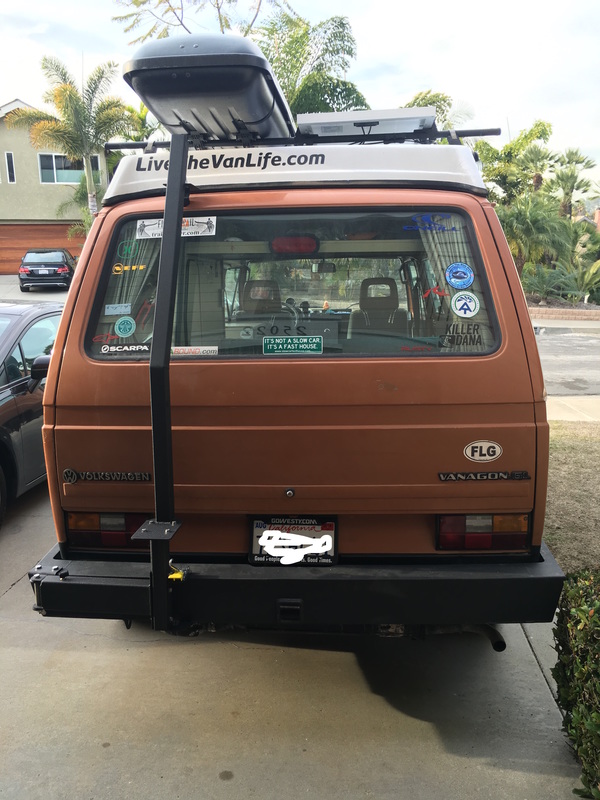
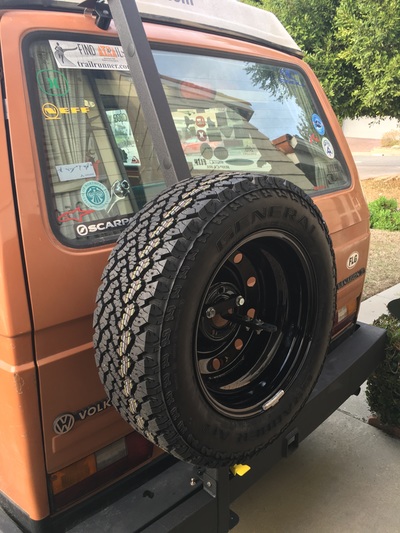
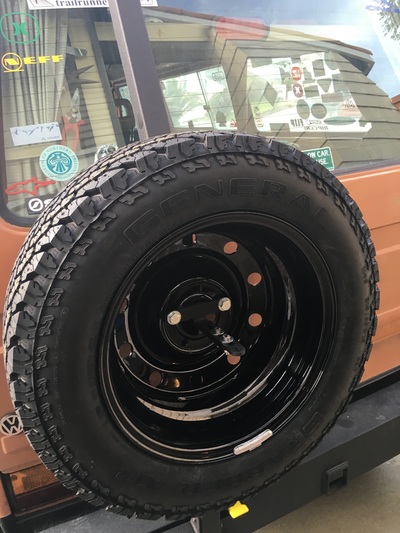
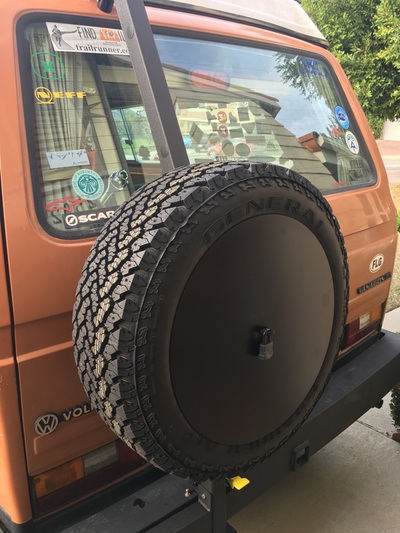
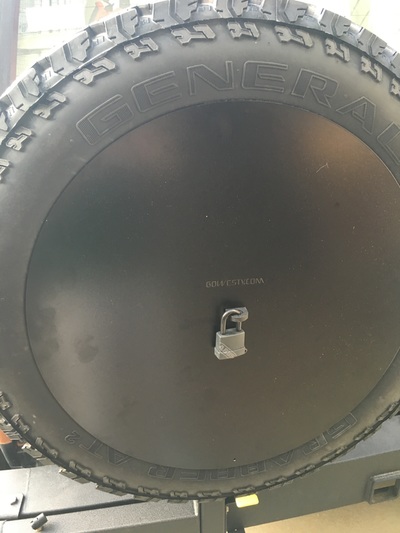
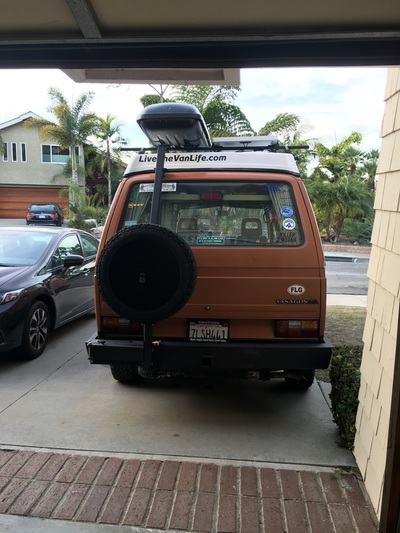
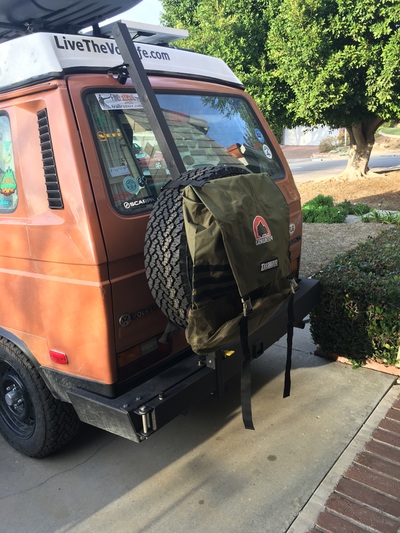
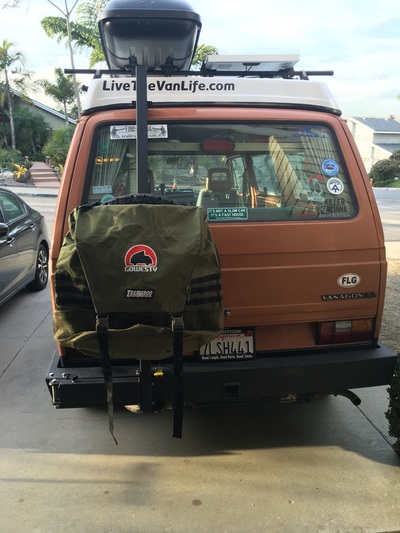
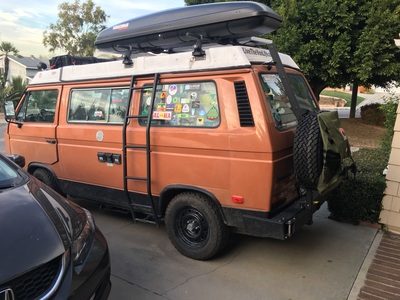
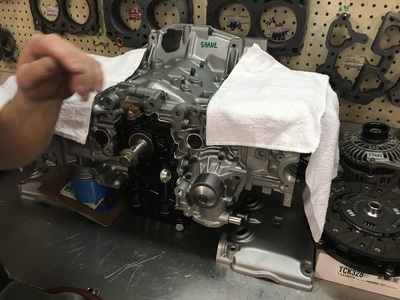
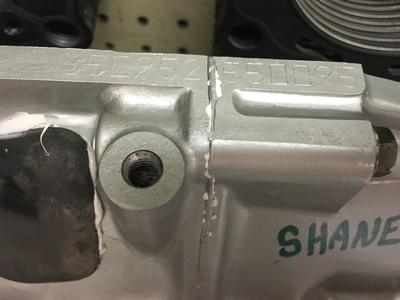
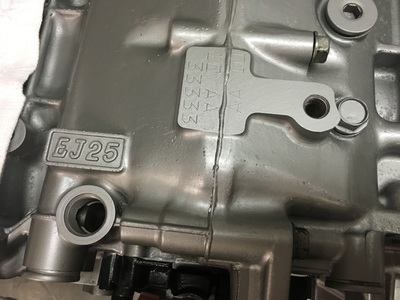
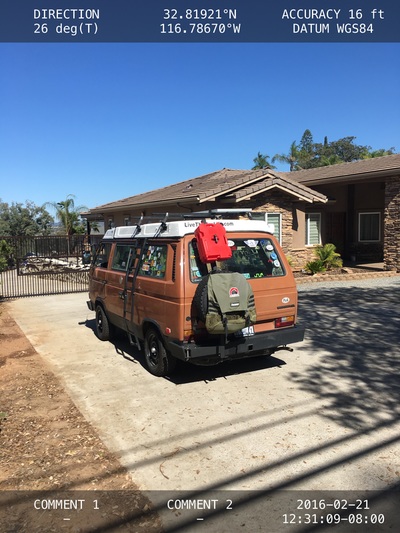
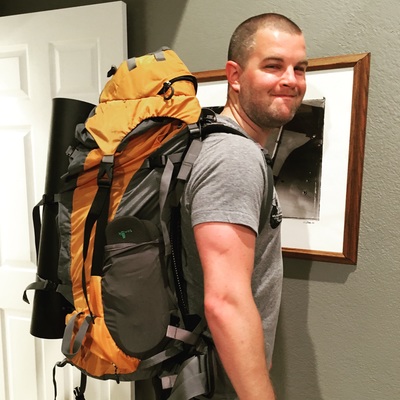
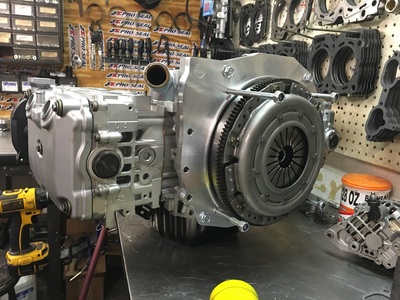
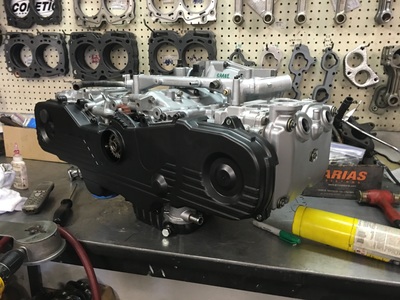
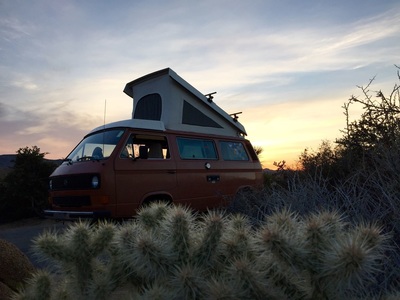
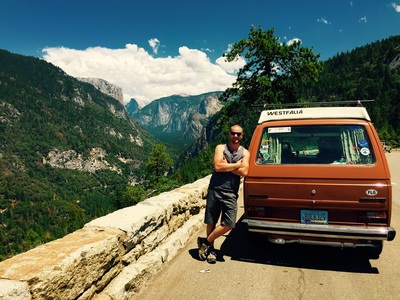
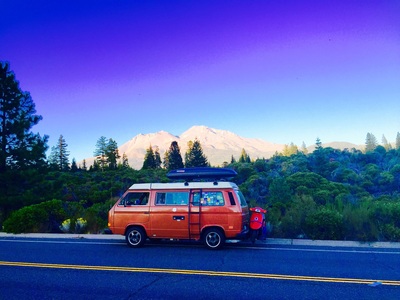
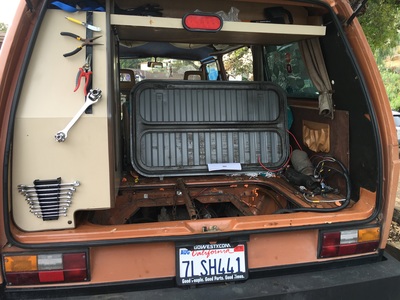
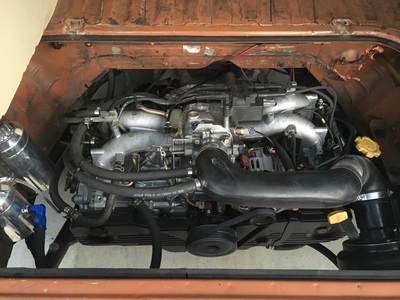
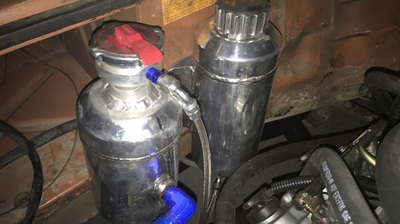

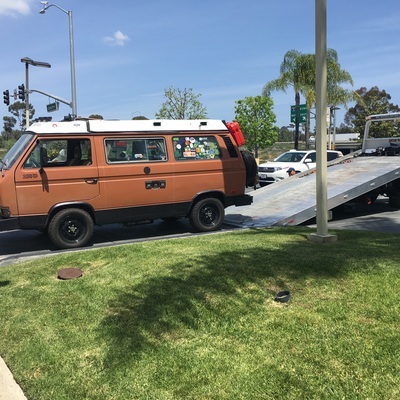
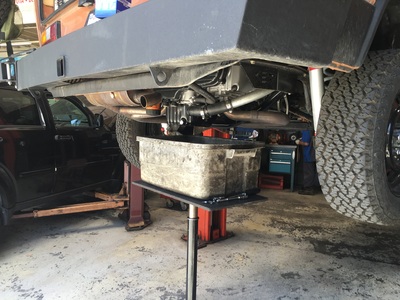
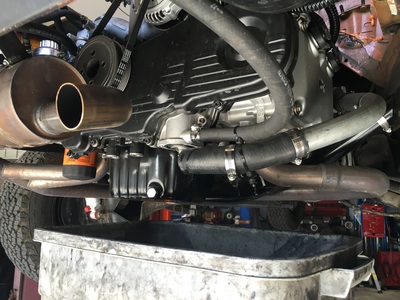
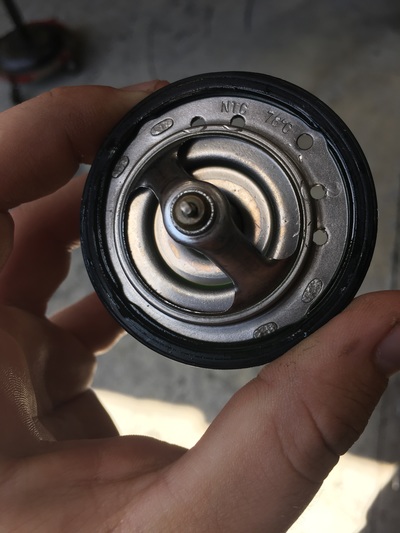
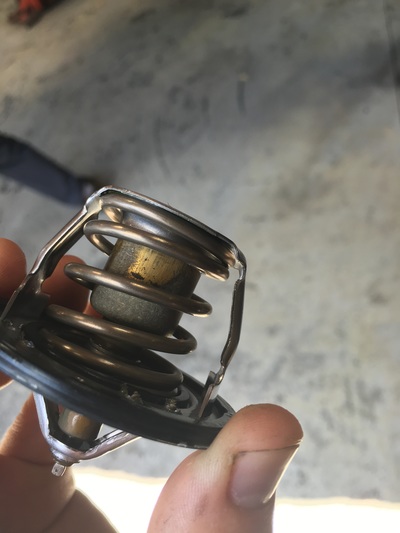
 RSS Feed
RSS Feed